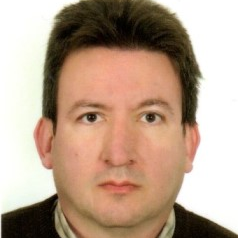Application of UAV and GIS for Geosciences
A special issue of Minerals (ISSN 2075-163X). This special issue belongs to the section "Mineral Exploration Methods and Applications".
Deadline for manuscript submissions: closed (15 December 2021) | Viewed by 12614
Special Issue Editor
Interests: GIS; remote sensing; photogrammetery; hydrology; geological mapping
Special Issues, Collections and Topics in MDPI journals
Special Issue Information
Dear Colleagues,
Until a few years ago, Unmanned Aerial Vehicles (UAVs), more commonly known as drones, were introduced to the wide public either as an extremely expensive military project or as a very cheap toy for kids. The use of UAVs for research purposes has recently become possible and affordable due to technological developments such as autopilot systems, lightweight action cameras, miniature GNSS sensors, advances in carbon fiber airframes and the simultaneous development of new processing methodologies based on computer vision like the structure from motion photogrammetry. Carrying different kinds of sensors, like RGB, multispectral or thermal cameras, hyperspectral or Lidar sensors, or even ground penetrating radar and echo sounders, UAVs provide valuable information at extremely high spatial resolution and accuracy. The complexity of the above mentioned information can be well stored, described and processed within the frame of a Geographic Information System (GIS), which is defined as a set of tools for the input, storage, management, analysis and cartographic representation of geographic information. This Special Issue aims to highlight the combination of UAV data and GIS techniques for Geosciences. Potential topics include but are not limited to the following:
- Survey and mapping
- Mine monitoring
- Volcanology
- Archaeology and monument inspection
- Soil contamination
- Coastal Erosion
- Disaster management
- Landslides
- Shallow water bathymetry
- Coral reef mapping
- Hydrology
Dr. Konstantinos G. Nikolakopoulos
Guest Editor
Manuscript Submission Information
Manuscripts should be submitted online at www.mdpi.com by registering and logging in to this website. Once you are registered, click here to go to the submission form. Manuscripts can be submitted until the deadline. All submissions that pass pre-check are peer-reviewed. Accepted papers will be published continuously in the journal (as soon as accepted) and will be listed together on the special issue website. Research articles, review articles as well as short communications are invited. For planned papers, a title and short abstract (about 100 words) can be sent to the Editorial Office for announcement on this website.
Submitted manuscripts should not have been published previously, nor be under consideration for publication elsewhere (except conference proceedings papers). All manuscripts are thoroughly refereed through a single-blind peer-review process. A guide for authors and other relevant information for submission of manuscripts is available on the Instructions for Authors page. Minerals is an international peer-reviewed open access monthly journal published by MDPI.
Please visit the Instructions for Authors page before submitting a manuscript. The Article Processing Charge (APC) for publication in this open access journal is 2400 CHF (Swiss Francs). Submitted papers should be well formatted and use good English. Authors may use MDPI's English editing service prior to publication or during author revisions.
Keywords
- Unmanned Aerial Vehicles
- GIS
- Remote Sensing
- Photogrammetery
- GNSS
- Multispectral cameras
- Hyperspectral cameras
- Thermal cameras
- Lidar





